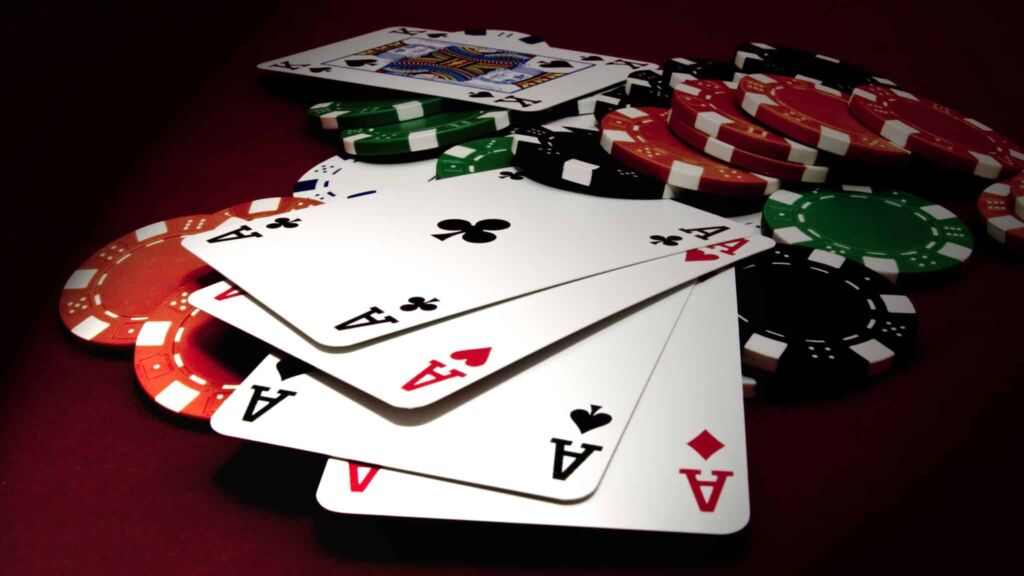Developing the technique of range balancing is vital for all poker players, whether they're just starting out or have been playing for years. This skill ensures that your gameplay remains unpredictable and your opponents have a hard time figuring out your moves. Whether climbing the ranks in cash games or competing in tournaments, keeping opponents on their toes by varying your playstyle is essential for success in the long run. The following content explores the concept of range balancing, its significance, and how to incorporate it into your online poker tactics.
Explaining 'Balancing Your Range' in Poker
In poker terms, a 'range' refers to the potential collection of poker hands you could hold in a particular game circumstance. For instance, during a game where you make a pre-flop raise, your range might include powerful hands like Aces or Kings, mid-range hands like 10-J or suited connectors, and even potential low-valued hands such as small pairs or suited Aces.
To balance your range means to play a diversity of hands in a way that conceals your hand from opponents. If you always prioritize strong hands or repeatedly bluff in raises, astute opponents will catch on and adapt their strategy against you. By balancing your range, you invite uncertainty for your opponents, thereby protecting yourself from being taken advantage of.
The Importance of Range Balancing in Poker
Mastering the art of balancing your range is essential for paving a successful career as a poker player. If your approach is solely based on strong hands while folding weaker ones, your predictability will soon be exploited, leading to losses over time as skilled players catch on to your patterns.
Conversely, incorporating bluffs, semi-bluffs, and even strategic overbets makes it challenging for opponents to gauge your hand's strength. The trick is to maintain the right equilibrium. A well-rounded range involves playing both strong and weak hands, complicating your opponents' attempts to discern whether you're bluffing or holding an exceptional hand.
Steps to Establish a Balanced Range: A Beginner's Guide
Recognizing the need to balance your range is the first step, let’s delve into how you can apply this tactical knowledge into your poker games. The initial phase in balancing your range involves deciding which hands to play under specific circumstances. An effective strategy requires understanding your table position, managing stack sizes, and analyzing opponent tendencies more closely.
1. Acknowledge Your Table Position
Position is a crucial aspect of strategic gameplay in online poker. It describes your order relative to the dealer, where the players acting last can observe others before deciding.
From an early position (when you're one of the first players deciding), it's wise to narrow your range and rely on strong hands due to the higher possibility of others holding even better hands. Preferred hands here are high-value hands such as pocket Aces, Kings, Queens, or an Ace-King combination.
As you shift towards later positions, broadening your range becomes a feasible strategy. The freedom allows you to experiment with a wider variety of hands, like suited connectors, smaller pairs, or weaker offsuit holdings. This flexibility helps in exploiting those who have folded stronger hands in early positions.
2. Adjust for Stack Sizes
Managing your stack size is another pivotal factor in achieving a balanced range. A substantial stack encourages aggressive betting as it can absorb risks, whereas a smaller stack demands a more cautious approach, focusing on making the most of limited chips.
If you possess a deep stack, you have the liberty to widen your hand selection and engage in diverse plays. Deep-stacked players tend to embark on post-flop plays and take bold actions, making a balanced range crucial to safeguard against savvy opponents.
Conversely, a shorter stack implies tightening your range and emphasizing hands capable of landing strong post-flop combinations. Consideration of strong draws, like pocket pairs or suited connectors, can increase your odds of winning significant post-flop outcomes.
3. Vary Your Pre-Flop Range
Altering your pre-flop actions is an efficient tactic for range balancing. Sticking to a predictable play pattern of raising with the same cards can give opponents clues to your play strategy. By interchanging actions, like folding powerful hands occasionally or raising weak ones, you add complexity to your game, throwing off opponents.
To illustrate, when playing from a late position with a hand such as 8-7 suited, you might decide to raise to exploit your advantageous standing. Conversely, folding a hand like pocket Jacks, typically raised with, can add an unpredictable twist to your game. Mixing actions in this way keeps opponents from pinpointing whether you're dealing with a robust or weaker hand.
Balancing Your Post-Flop Play
Post-flop strategy further enhances range balancing, steering decisions on the flop, turn, and river. Maintaining variety in play prevents opponents from predicting your actions.
1. Mix in Bluffing and Semi-Bluffing
Bluffing is an indispensable technique all poker players must adapt. Yet, a balance between bluffs and value bets is necessary. Over-relying on bluffs leads to frequent callouts by opponents, resulting in financial losses. In contrast, never bluffing ensures your opponents only fold to your strong hands, limiting potential profits.
Employing semi-bluffs effectively is a superior approach to balancing post-flop decisions. Semi-bluffing involves betting with cards harboring future potential, like a straight or flush draw, capable of achieving victory either by causing an opponent to fold or by forming the winning hand.
2. Adjust Your Bet Sizing
Bet sizing represents another tactical facet you can exploit to maintain range balance. A predictable betting pattern warns opponents about your bets’ intentions, allowing them to adjust accordingly. To combat predictability, vary your bet sizes based on your hand's strength and the current gaming situation.
A hand with considerable power, such as a top set (three of a kind) on the flop, might warrant a larger bet to maximize value extraction. In contrast, when bluffing or dealing delicates hands, you could opt for smaller wagers, conserving chips and minimizing potential losses.
Frequent Oversights in Range Balancing
Even seasoned players may slip up when balancing their ranges. Here are some common pitfalls to be aware of:
1. Over-Bluffing
Although bluffing plays a pivotal role in range balance, excessive bluffing can be detrimental. An overabundance of bluffs alerts opponents who will then call more frequently, rapidly diminishing your stack, especially against perceptive players willing to discard weaker hands.
2. Under-Bluffing
Conversely, failure to bluff can be equally problematic. When you strictly wager with strong hands, opponents quickly perceive the pattern, allowing them to exploit it by folding lesser hands or calling only with beats.
3. Failing to Adjust to Opponents
Within the larger framework of range balancing, adjusting to your opponents' characteristics is just as vital. Facing a tight opponent that places emphasis on elite hands may prompt you to be more liberal with bluffing. Alternatively, pitting against a loose player known for frequent bluffs might necessitate a tighter, more restrictive approach.
Final Thoughts: Achieving Long-term Poker Success through Range Mastery
Balancing your range is among the pivotal capabilities for any committed online poker participant. Intertwining play styles, based on positional context, chip stack nuances, and read of rival behaviors, imbues your game with invaluable fluidity and surprise, prerequisites for consistent wins at the table.
Whether engaging in bluffs, playing semi-bluffs, or maneuvering solid hands, the ultimate objective is to maintain a cloak of uncertainty, ensuring no obvious pattern emerges. Scale ambitions in poker demand dedication, patience, and a grasp of range balancing to add depth to your mastery.



